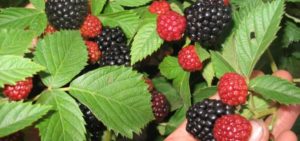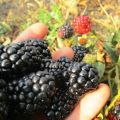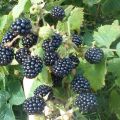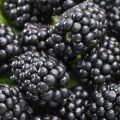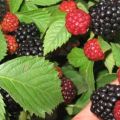Description of the best varieties of blackberries and features of choice for different regions
Gardeners are often lost in front of the abundance of blackberry varieties. I would like to plant an undemanding and fruitful variety or hybrid. And it should take up little space. Some summer residents are afraid of the possible spread of the plant over the site. They are attracted by the varieties of remontant blackberries. These shrubs are quite compact and calm. Before buying a plant, you need to understand what the plant should be like. And what kind of harvest you want to get from it.
Early varieties
Blackberry is a member of the Pink family. It is a perennial shrub with erect, creeping or semi-creeping shoots. In culture, there are forms with or without thorns.
Early varieties delight in harvest in June. But you should not expect a wonderful taste from the berries: they are sour, watery. But the value of the early types lies in the fact that they bear fruit when there are still no berries in the gardens, except for blackberries.
Giant
This is a product of Arkansas breeders. The giant is a remontant blackberry. Plant characteristic:
- erect shoots with thorns;
- plant height from 1.5 to 2 m;
- brittle stems: a garter to the support is required;
- flowers are large, fragrant;
- withstands frosts down to -40 degrees Celsius without shelter;
- bears fruit twice: in June and in August.
The berries have an elongated rounded shape. They taste good. The berry mass reaches 25 grams. The yield of the Giant is noteworthy: up to 35 kg from one bush.
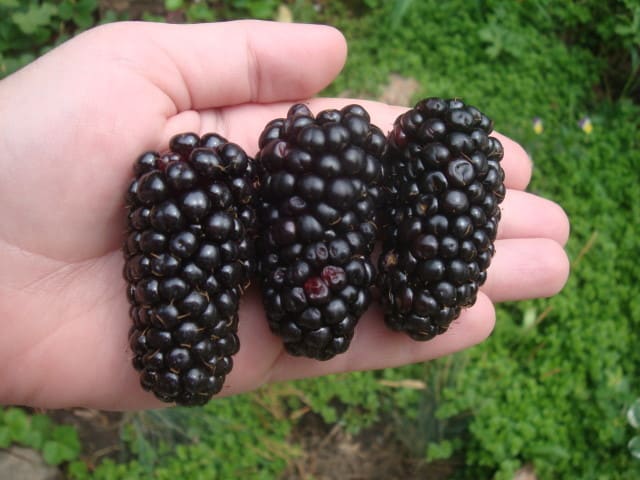
Karaka Black
This is a hybrid created by New Zealand breeders. The plant is different:
- semi-creeping flexible shoots up to 6 m long;
- stems with many thorns;
- elongated berries;
- sweet and sour berry taste.
The advantage of the hybrid is unpretentiousness, ease of sheltering shoots for the winter. Disadvantage: the tops of the stems easily root themselves and form solid thickets in the country.
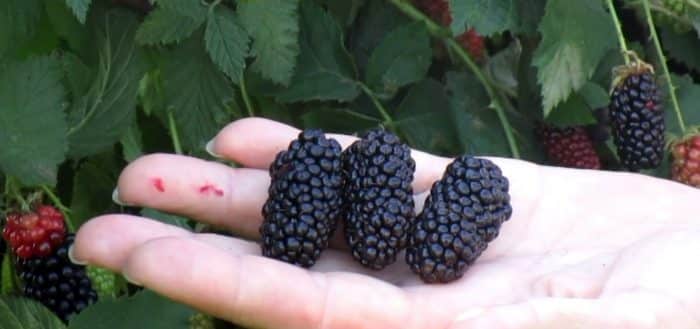
Columbia Star
A relatively new type of blackberry without thorns. Requires a garter to support. Gardeners love:
- taste (sweet and sour) of berries;
- compactness of the bush (creeping shoots up to 5.5 m);
- high yield (up to 10 kg per bush);
- self-fertility.
After picking, the berries are stored for 3-4 days without losing marketability.
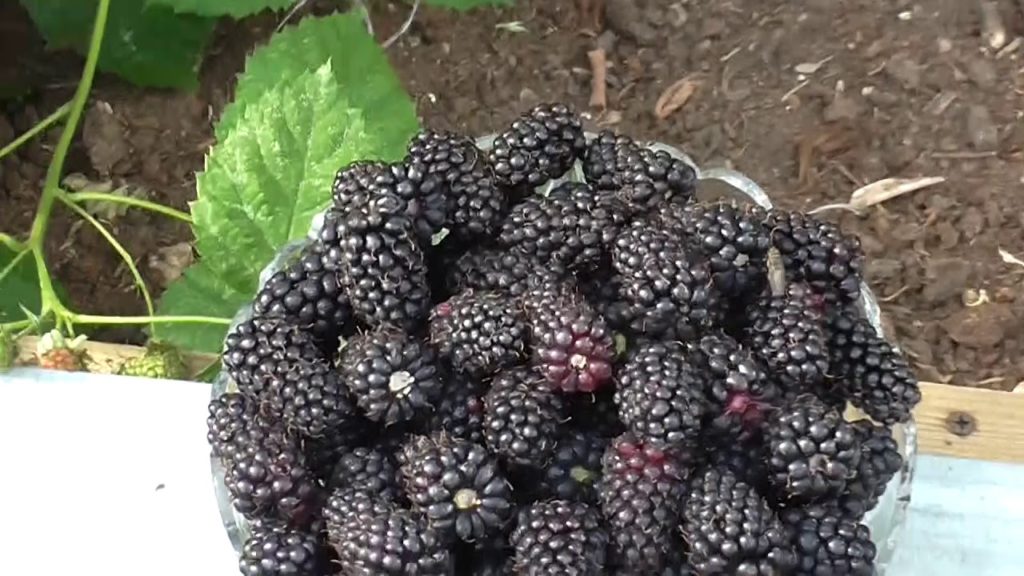
Natchez
Representative of the blackberry without thorns. Plant characteristics:
- erect shoots up to 3 m long;
- yield up to 20 kg from one bush;
- a small number of replacement shoots;
- frost resistance up to -20 degrees Celsius;
- extended (up to 40 days) fruiting;
- sweet berries, weight up to 12 g;
- excellent transportability.
Spreading bushes: it is recommended to maintain a distance of up to 1 m between them.

Osage
The most delicious type of thornless blackberry. Its features:
- low (up to -13 degrees Celsius) frost resistance;
- yield up to 3 kg per bush;
- erect shoots up to 3 m high.
The main advantage: the special taste of berries. Because of this, gardeners put up with the shortcomings of the variety.
Ouachita
The advantage of the variety is the absence of thorns. Ouachita is different:
- thick erect shoots up to 3 m high;
- yield up to 30 kg per bush;
- unpretentiousness;
- ease of growing;
- resistance to diseases and pests.
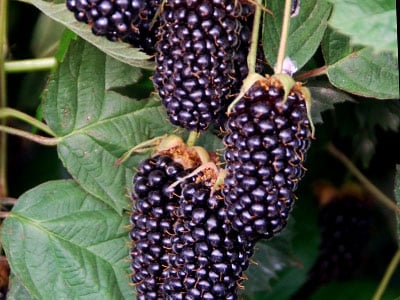
The berries are round, weighing up to 7 g. When growing a lash, it is recommended to tie it to a support: the plant overloads itself with fruits. Plant disadvantage: low frost resistance (up to -17 degrees Celsius).
Chachanska Bestrna
This is a kind of thornless blackberry. Its characteristics:
- yield up to 15 kg per bush;
- flexible semi-creeping shoots up to 3.5 m;
- drought resistance;
- resistance to diseases and pests.
The berries are large (up to 7 g), sweet. Plant frost resistance up to -26 degrees. Keeping quality and transportability of berries is low (after 2-3 days marketability is lost).
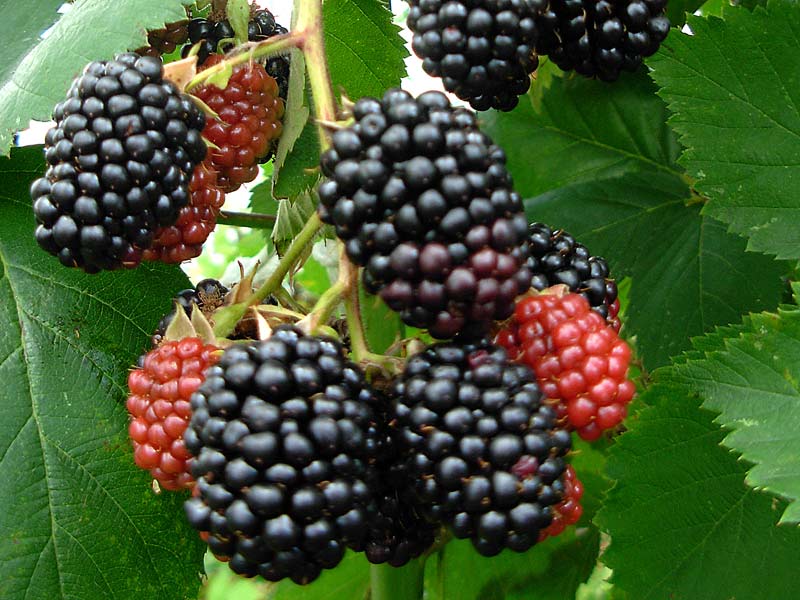
El Dorado
An excellent variety with high (up to -35 degrees) frost resistance. Its features:
- erect (up to 3 m) shoots;
- spikes are rare;
- high (up to 20 kg per bush) yield;
- stable fruiting;
- pleasant dessert taste of fruits;
- the shape of the berries is round-elongated.
The plant requires a garter to support it. Disadvantage: Eldorado gives abundant root shoots, spreads over the site.
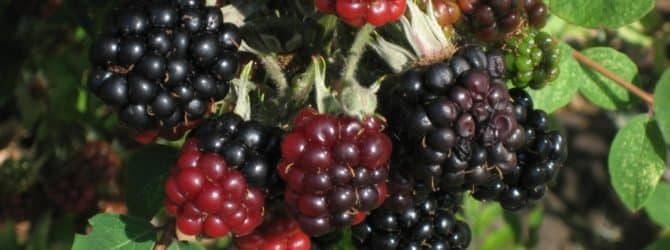
Mid-season varieties
After the early varieties of blackberries, gardeners are pleased with the mid-season. Breeders have created studless types with studs. These types produce more aromatic and juicy berries. Fruiting in mid-season blackberries is amicable.
Valdo
The gardener-tested, studless blackberry. Distinctive features:
- compact bushes;
- creeping flexible shoots 2 m long;
- medium frost resistance (up to -25 degrees Celsius);
- yield up to 17 kg per bush;
- berries up to 8 g, refreshing.
Blackberries are not demanding to care for: the most important item is shelter for the winter.
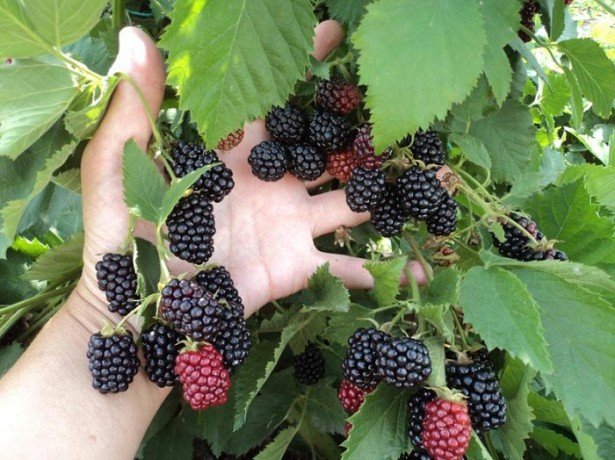
Kiova
This blackberry has the largest (up to 25 g) berries. The harvest ripens at the end of July. The variety is characterized by:
- high yield (up to 30 kg per bush);
- erect shoots up to 2 m high;
- an abundance of thorns;
- transportability without loss of marketability.
Blackberries require a garter to a support and a mandatory shelter for the winter (for regions with cold winters).
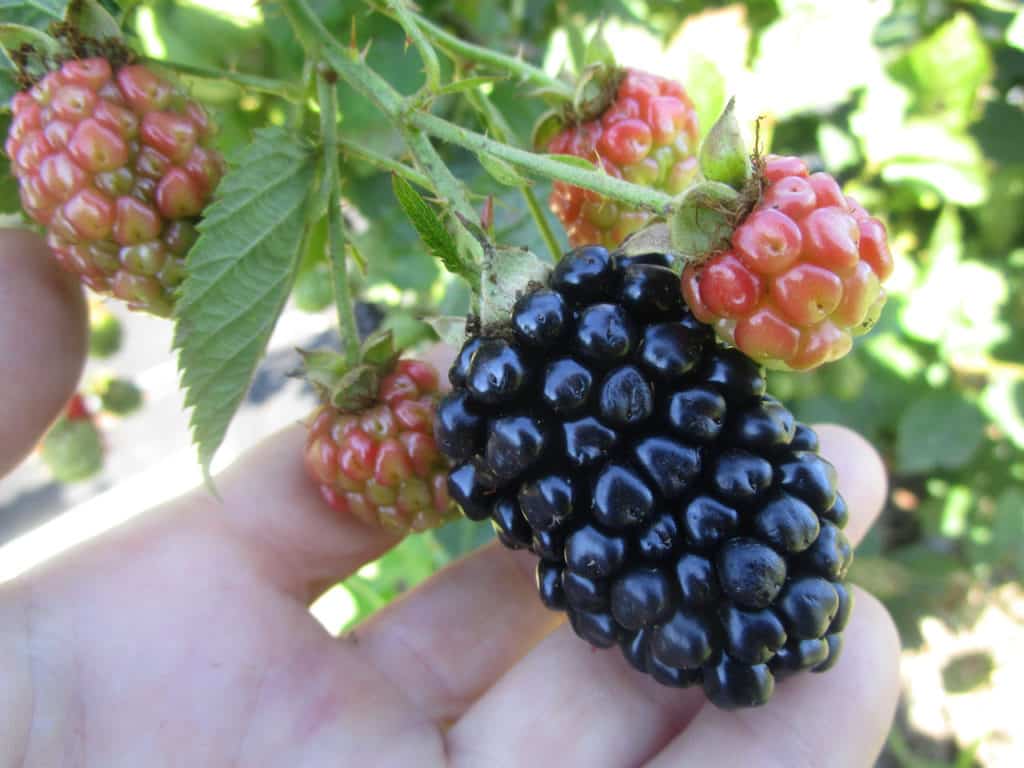
Loch Ness
A thornless variety that pleases the gardener with fruits that taste like wild berries. Excellent yield (up to 25 kg per bush). Attractiveness of the variety:
- fruiting stability;
- unpretentious care;
- sweet taste;
- ease of reproduction.
But there are also disadvantages:
- semi-creeping shoots, grow up to 5 m;
- the plant necessarily requires support;
- lack of heat and light affects the taste of the berries.
Blackberries are ideal for those growers who sell surplus produce.
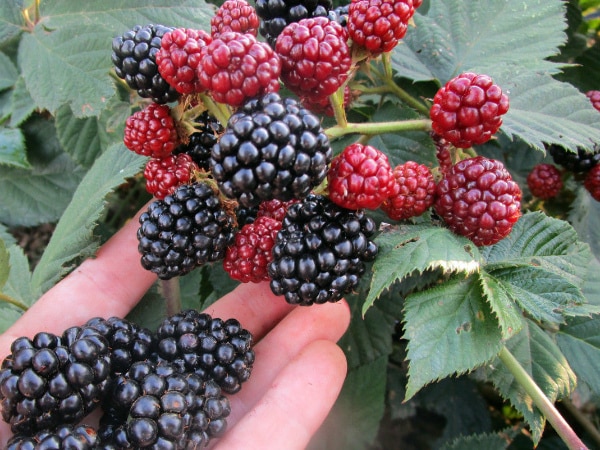
Loch Tei
The variety is attractive because of the absence of thorns. Blackberries are characterized by:
- semi-creeping shoots up to 5 m long;
- frost resistance up to -20 degrees Celsius;
- large (up to 5 g) berries;
- sweet and sour taste of the fruit;
- excellent transportability;
- high yield (up to 15 kg per bush).
Gardeners consider the variety ideal for cultivation in summer cottages.
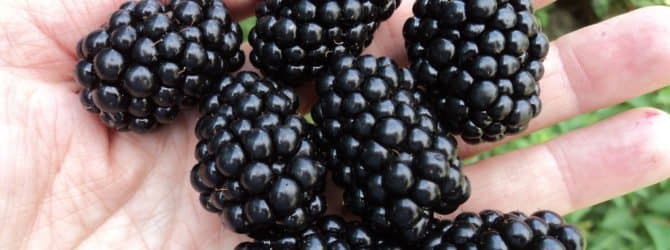
Columbia Star
A relatively new variety of blackberries. Requires a garter to support. Gardeners love:
- taste (sweet and sour) of berries;
- lack of thorns;
- compactness of the bush (creeping shoots up to 5.5 m);
- high yield (up to 10 kg per bush);
- self-fertility.
After picking, the berries are stored for 3-4 days without losing marketability. Colombian blackberry pleases with a mass of berries (up to 15 g). The plant has a frost resistance up to -14 degrees Celsius.
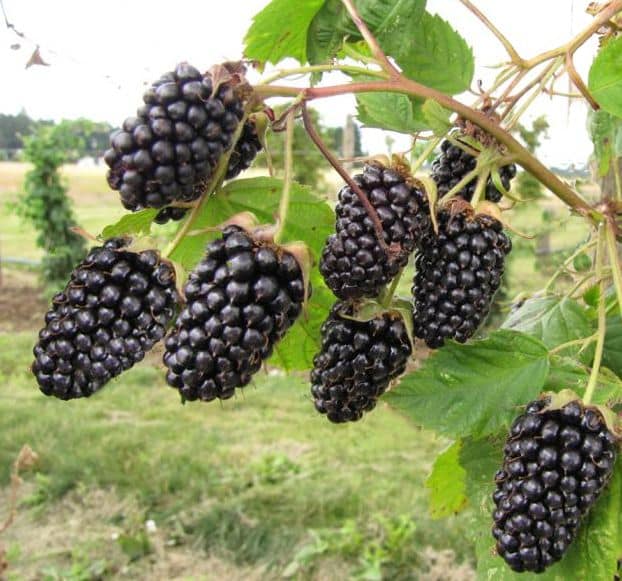
Sweet Pye
Another novelty among the studless varieties. It was created by breeders in the late 90s of the last century. Sweet Pai is a cross between Navajo and Brazos.
This variety has the most delicious fruits. They have a high sugar content (up to 12%).
Characteristics of the variety:
- disease and pest resistance;
- unpretentiousness;
- berries of medium size, glossy, juicy.
Sweet Pye is a good addition to the collection.
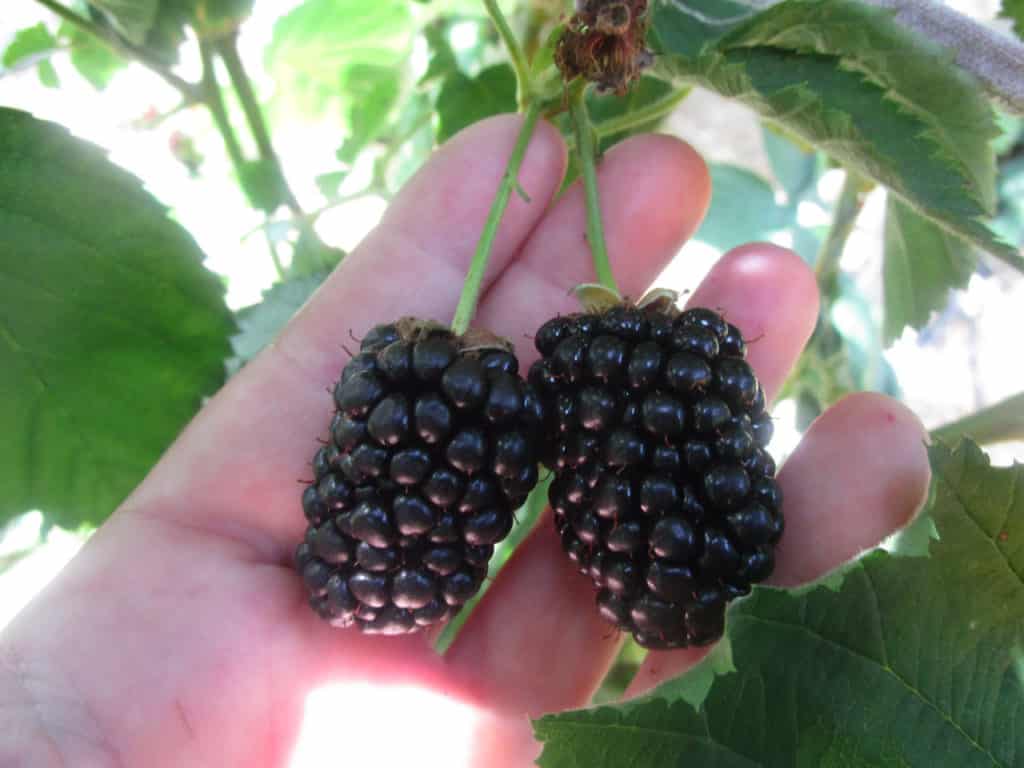
Vaughn
A distinctive feature of the thornless variety is small seeds that do not irritate when eating. The variety was created in 1998. Specifications:
- extended fruiting;
- preservation of marketability during transportation;
- the yield of the first year - 12 kg per bush, subsequently increases;
- winter hardiness is low (withstands frosts down to -12 degrees Celsius);
- erect shoots, strong;
- lack of root processes (does not creep over the site);
- resistance to anthracnose, rust.
Vaughn is recommended for cultivation in summer cottages.
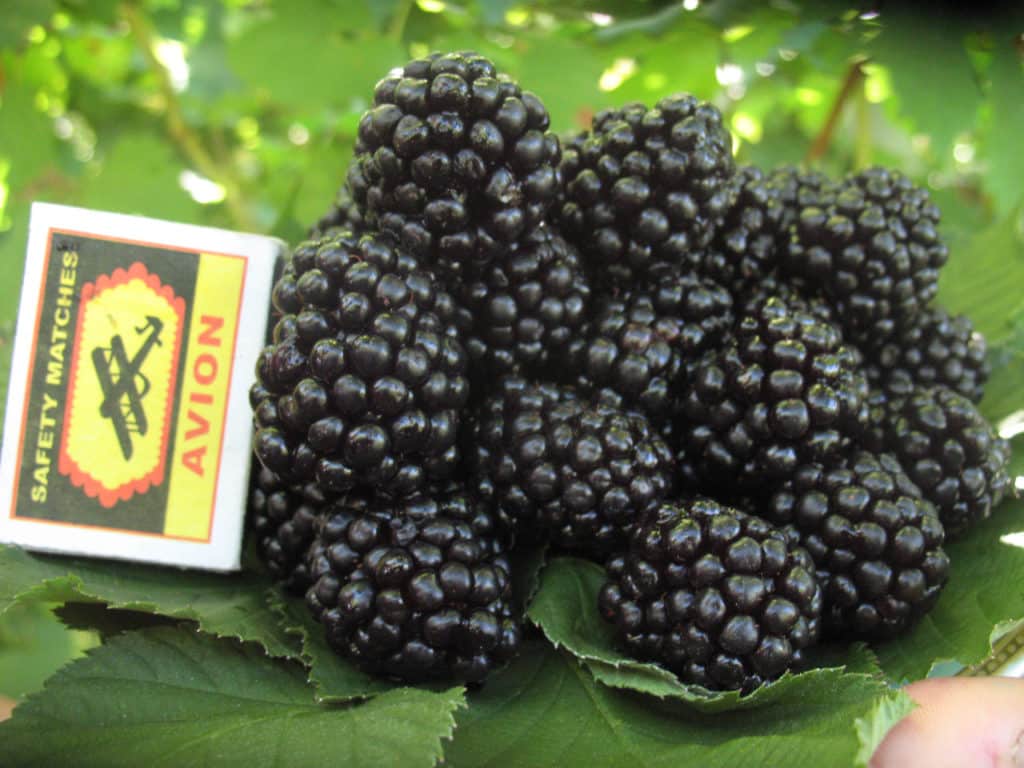
Late varieties
These varieties complete the berry season in the orchards. They yield in August and bear fruit until September, and some before frost.
Black Satin
Ancient thornless blackberry. Many gardeners grow it. Distinctive features:
- yield depends on agricultural technology (subject to the rules - up to 25 kg per bush);
- berry weight up to 5 g;
- taste depends on the number of sunny and warm days;
- semi-creeping shoots (up to 5.5 m);
- can be grown without support by bending plants to the ground;
- frost resistance up to -22 degrees.
Black Satin is characterized by unpretentiousness and disease resistance.
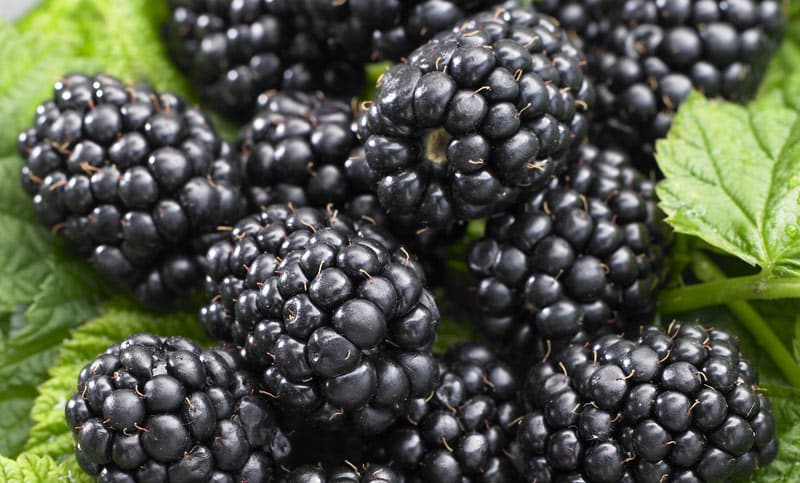
Doyle
The most productive of the thornless blackberries. Plant characteristic:
- erect shoots, slightly inclined to the ground;
- shoot length up to 4 m;
- maximum fruit weight - 8 g;
- extended fruiting (up to 2 months);
- the taste of the fruit is sweet and sour;
- the pulp is dense, aromatic;
- excellent transportability without loss of marketability;
- the bushes are drought-resistant;
- frost resistance up to -15;
- resistance to diseases and pests.
The value of the variety is yield. Gardeners collect up to 50 kg of fruits from one bush.
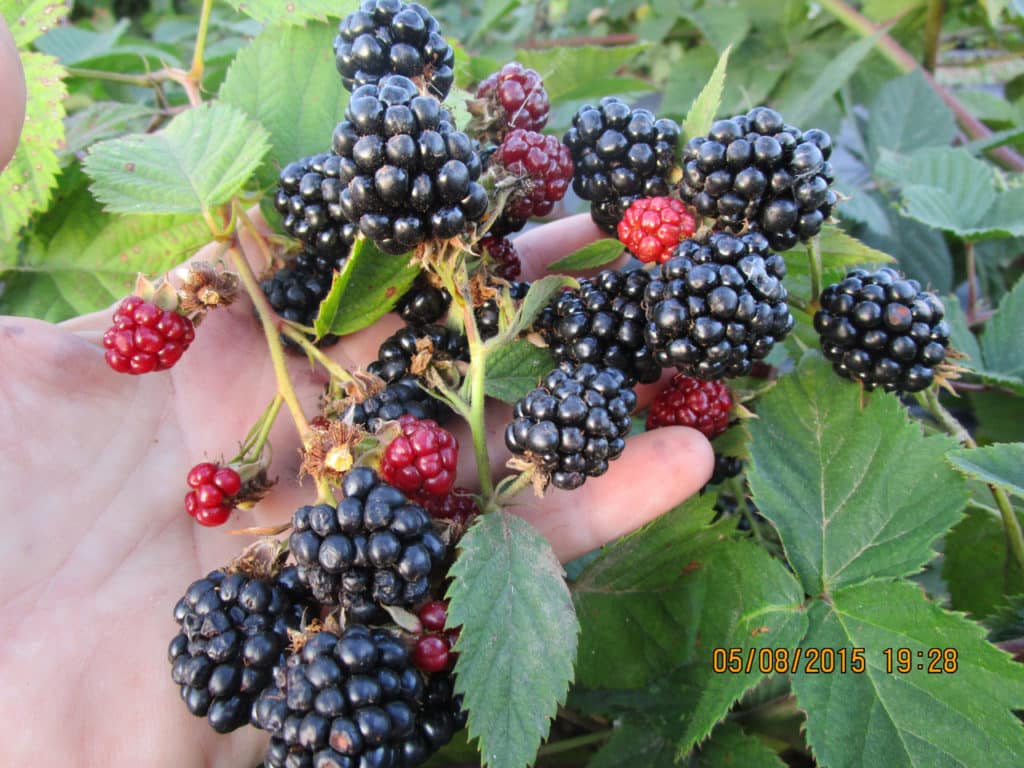
Navajo
A remarkably easy-to-root and easy-care blackberry. Distinctive features:
- stable fruiting;
- extended fruiting (the crop is harvested a month);
- pleasant taste (sweet and sour);
- frost resistance up to -20 degrees;
- transportability without loss of marketability;
- erect shoots up to 1.5 m high;
- when growing, it is possible to do without support.
Navajo Value: Blackberries are resistant to major diseases.
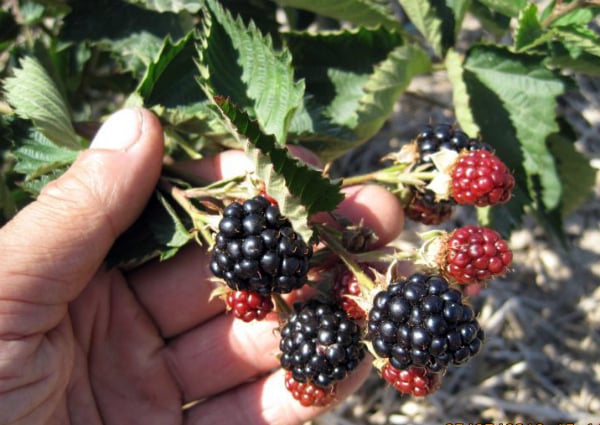
Oregon Thornless
The bush has creeping shoots. They grow up to 4-5 m. The plant has a stem free from thorns. Fruits are medium (up to 5 g). Dessert taste, sweet and sour. Subject to the rules of care, it yields 12 kg per plant. The berries are transportable. Oregon grows in any soil, but the maximum yield is obtained by observing the rules of agricultural technology.
Minus: without shelter can withstand frosts down to -12 degrees.
Texas
Product of Michurin selection. Plant characteristic:
- long (up to 5 m) creeping shoots;
- young shoots are fluffy, then thorny;
- lack of root growth;
- simple rooting of the tops;
- fruit weight 11 g;
- the color of the fruit is raspberry-purple, with a waxy bloom;
- the taste is sweet and sour.
Texas can be grown without a support.
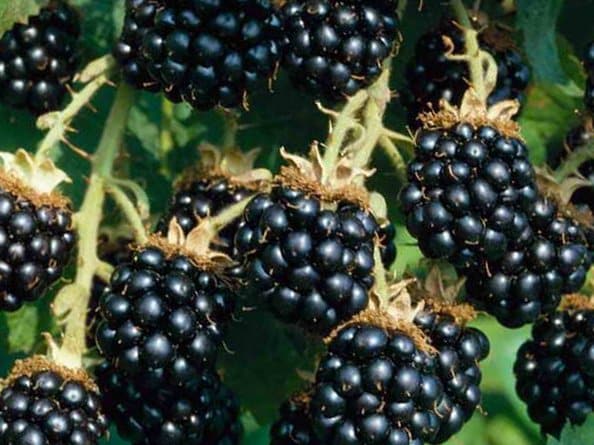
Thornfree
It is an upright form of blackberry. Its shoots grow over 4 m, slightly bent towards the ground. To preserve the harvest, a garter to the support is recommended. Plant characteristic:
- lack of thorns;
- large brushes (more than 30 pieces of berries);
- the pulp is dense, juicy;
- excellent transportability without loss of marketability;
- stable fruiting.
This blackberry is an excellent industrial form. But in the northern regions it requires shelter for the winter.
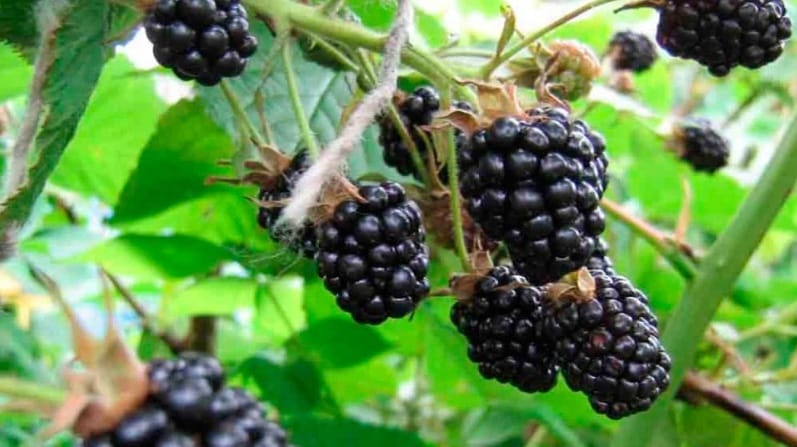
Triple Crown
An excellent variety with extended fruiting. Its characteristics:
- erect shoots, slightly inclined;
- length up to 4 m;
- vigorous bush;
- significant foliage;
- yield up to 13 kg per plant;
- the berries are pleasant, sweet and sour;
- the pulp is dense, aromatic;
- excellent plant survival.
The berries do not crumble as they ripen. But in extreme heat they dry out on the brush.
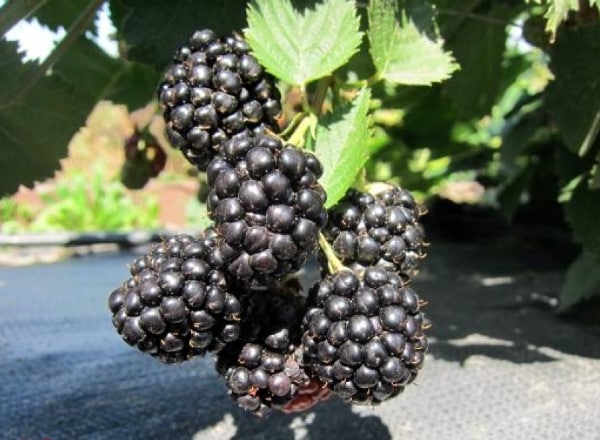
Chester
A variety with pink flowers created by American breeders for industrial use. Distinctive features:
- bearingless form;
- an abundance of brushes with fruits;
- semi-creeping shoots (up to 4-5 m);
- bushes overload themselves with fruits: support is required.
With proper care, it is realistic to collect 20 kg from one bush.
Gazda
Polish breeders have created a variety with a low number of thorns. The mass of berries is up to 5 g. The taste of fruits is sweet with sourness. The variety is characterized by high transportability and marketability. The plant pleases with its yield: subject to the rules of cultivation, it gives 20 kg per plant. Gazda is recommended for farms and summer cottages.
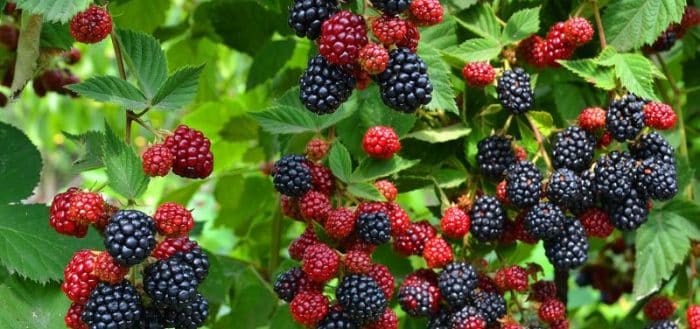
Enchantress
The enchantress was created by Russian breeders. Plant characteristic:
- drought resistance is excellent;
- undemanding care;
- berry weight up to 7 g;
- the taste is sweet and sour;
- frost resistance up to -30;
- resistance to major diseases and pests.
The plant gives a yield of up to 15 kg of dessert fruits per bush.
Thornless Logan
Representative of the Thornless group. It is a creeping form with long shoots (up to 5 m). It is characterized by abundant clusters (up to 6 fruits each). The taste of the berries is pleasant, sweet and sour. Fruit weight up to 4 g. The variety is easy to transport over long distances: berries do not lose marketability.

Loughton
This is a typical kumanik with erect shoots. Their length is about 3 m.Distinguishing features:
- a large number of thorns;
- medium-sized berry (up to 4 g);
- extended fruiting (1.5-2 months);
- frost resistance up to -21.
Bush blackberries will delight you with excellent dessert fruits.
Shade-tolerant varieties
Blackberries are a southern plant. To fully develop the taste, she needs lighting throughout the day. But not all gardeners can provide the plant with such conditions. In this case, shade-tolerant species should be chosen for planting. Representatives of this group grow up with a lack of sunlight.
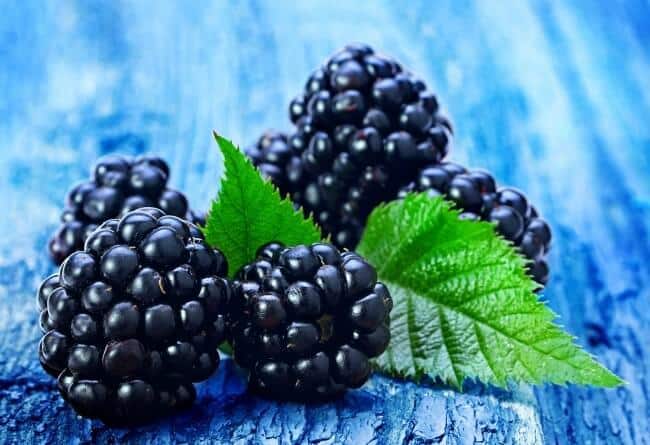
Agave
A variety of folk selection. Distinctive features:
- bush with high vigor;
- erect shoots, up to 4 m long;
- there are thorns;
- gives a lot of root growth;
- rooted by the tops of the shoots;
- frost resistance up to -30;
- brushes consist of 20-30 fruits;
- resistant to getting wet in spring;
- resistant to diseases and pests;
- in one place it grows up to 15 years.
But there are also disadvantages: ordinary, insipid taste, low transportability, low keeping quality.
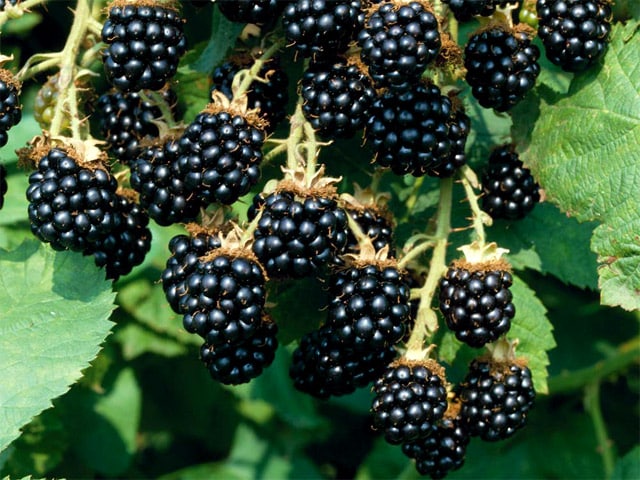
Thornless Evergreen
Very ornamental plant. Specifications:
- creeping shoots (up to 5 m);
- lack of thorns;
- flowers are white or white-pink;
- the leaf blade is cut;
- frost resistance up to -30;
- lack of root growth.
The berries are sweet and sour, overripe - almost tasteless. The plant is used to create hedges.
Black Prince
An interesting variety of large-fruited blackberries. You can find forms with and without thorns. Excellent frost resistance (up to -30). Productivity up to 25 kg per bush. Minimal maintenance required.
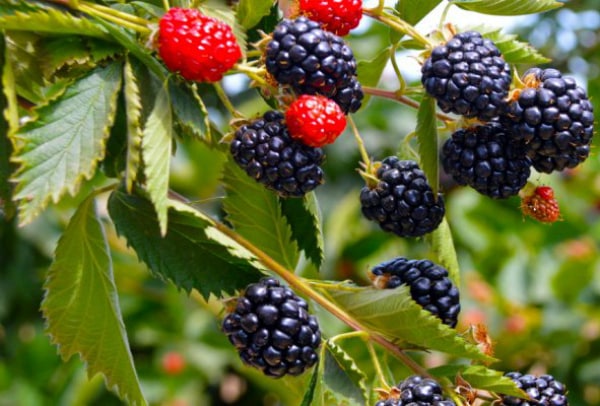
Frost-resistant varieties
Blackberries want to grow residents of different regions. And frost resistance, as a characteristic, is very important.
Such varieties and hybrids hibernate without shelter, if the temperature in winter does not fall below the mark indicated by the creators.
Apaches
Winter-hardy variety: easily tolerates frosts down to -20 without shelter. The berries are sweet, large (up to 10 g). Produces a lot of root growth. But it does not tolerate drought.
Arapaho
The variety gives gardeners sweet berries. Withstands frosts down to -25. Advantage: no thorns. Shoots grow up to 2 m. It is recommended to tie them to a support.
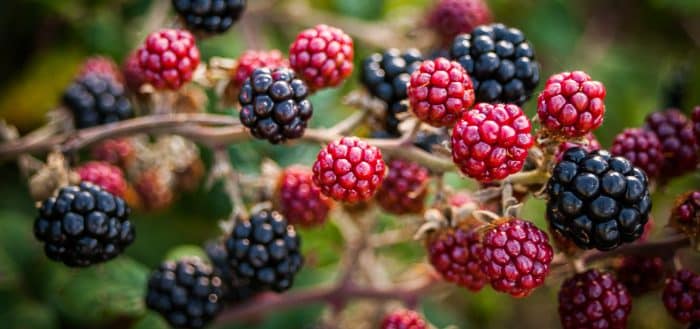
Darrow
The variety was created by American breeders. It can withstand frosts down to -34 without shelter. The berries have a sweet and sour taste, fresh when overripe.
Abundant
A frost-resistant (up to -30) variety bred by Michurin 100 years ago. In one place it bears fruit successfully for 15 years. Average yield 3 kg per bush. The number of fruits increases with top dressing and increased watering.
Polar
Polar is distinguished by its unpretentiousness and excellent survival rate. Therefore, it spread from industrial fields to private gardens. The variety's frost resistance is up to -23, but it can withstand frosts down to -30.
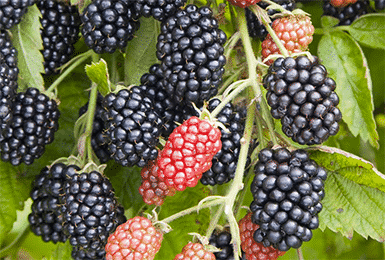
Ufa
The variety has a higher frost resistance than Agavam. The berries are sweet. But the study of the variety has not yet been completed: the tests continue.
Guy
A product of Polish breeders. It was created 30 years ago. Frost resistance of the grade up to -30. The fruit tastes like a mulberry tree.
Cherokee
The variety can withstand frosts down to -23 degrees. Shoots are thornless, berries up to 8 g. Honey berries, ideal for conservation and fresh consumption.
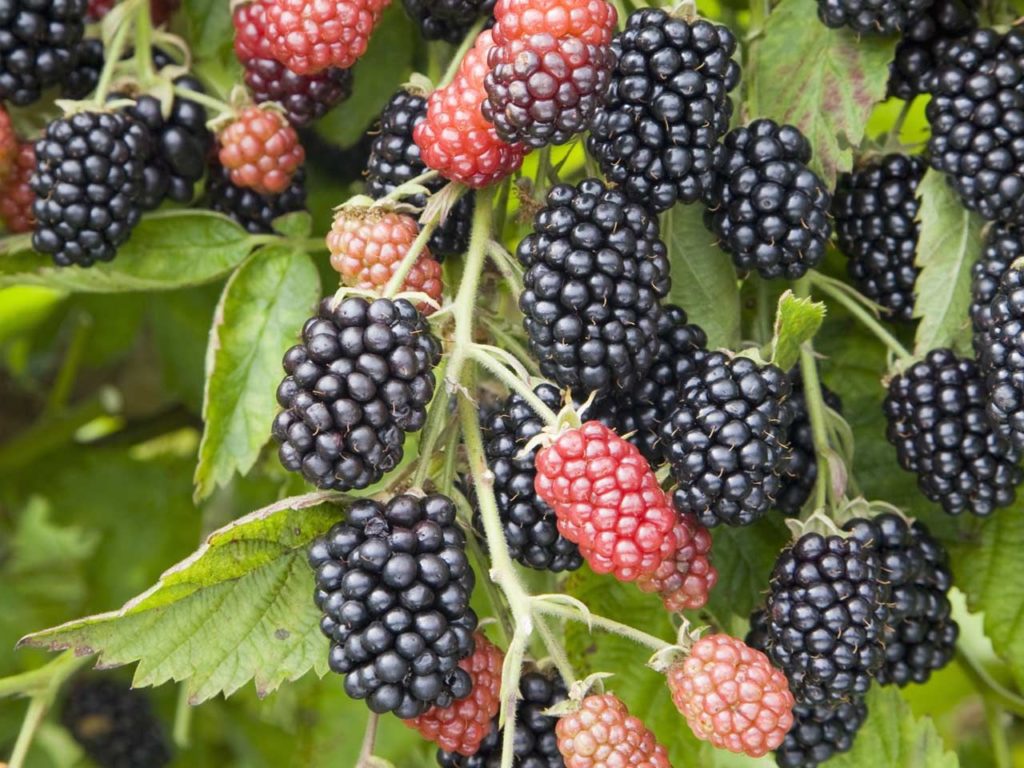
German uncovering
The thornless blackberry hibernates without shelter. It is characterized by a bunch of up to 65 cm in length. The berries are sweet, aromatic. Productivity up to 30 kg per plant.
Repaired varieties
Gardeners are attracted by varieties and hybrids that bear fruit 2 times per season. The first harvest is obtained at the very beginning of summer, the second at the end.
Black Magic
The berries grow on this year's shoots. Moreover, there are no thorns in the locations of the brushes. Fruits are sweet, weight up to 11 g. Productivity up to 6 kg per bush per fruiting.
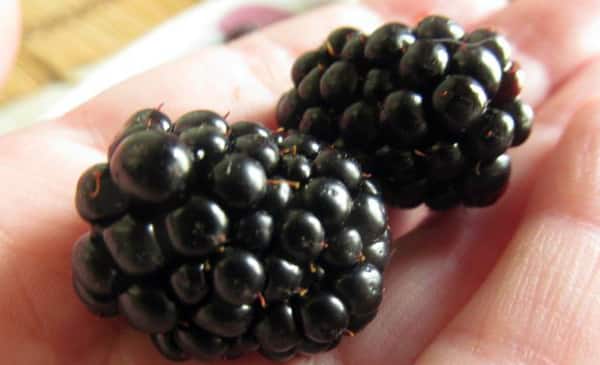
Prime Arc
Shoots have thorns at the bottom. Gives berries an excellent dessert taste. Excellent transportability. But shelter is required for the winter.
Prime Jim
Plant characteristic:
- shoots have thorns;
- the bush grows up to 2 m;
- a garter to the support is required;
- fruits are sweet with sourness;
- fruit weight up to 10 g.
A distinctive feature of blackberries: pink and white flowers.
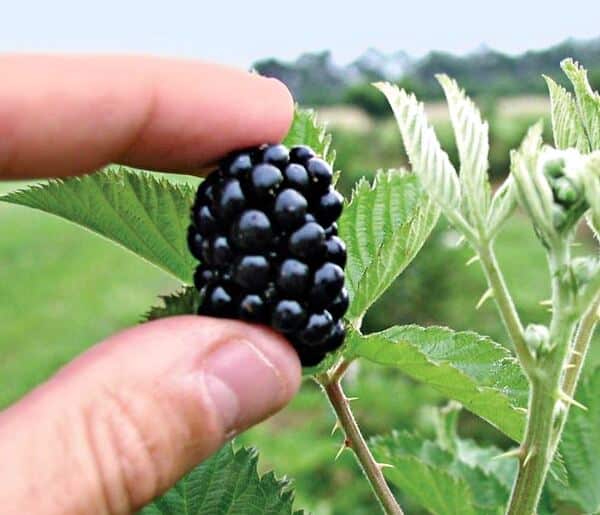
Prime Yang
The fruits grow up to 6-7 g. They are characterized by a sweet taste and apple aroma.
Prime Arc Freedom
Fruits weigh up to 20 g, sweet, aromatic. Shoots without thorns. Breeders give data on high yields among remontant types. Low frost resistance: up to -13.
Ruben
The largest of the remontant species. The mass of berries reaches 16 g. Shoots are strong, erect. Cultivation without support is possible.
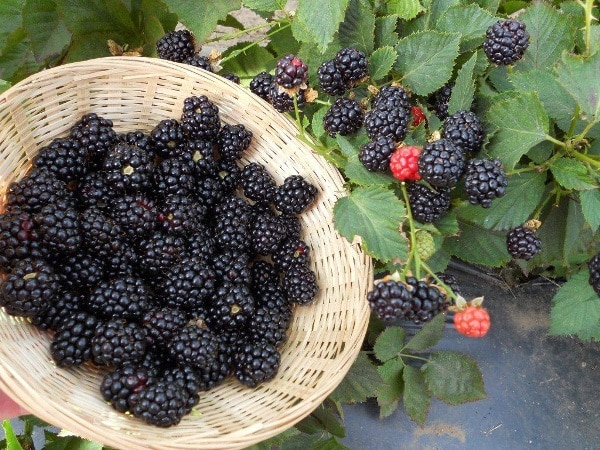
The best varieties for different regions of Russia
Gardeners want to grow blackberries everywhere. But when choosing a variety or hybrid, it is recommended to take into account the climatic features of the region and the degree of plant compliance with them.
For the middle lane
Agronomists recommend planting Agaves, Black Satin, Karaka Black, Ruben.
For the Moscow region
Ideal for the Moscow region: Apaches, Aparaho, Brzezina, Doyle, Karaka Black, Loughton.
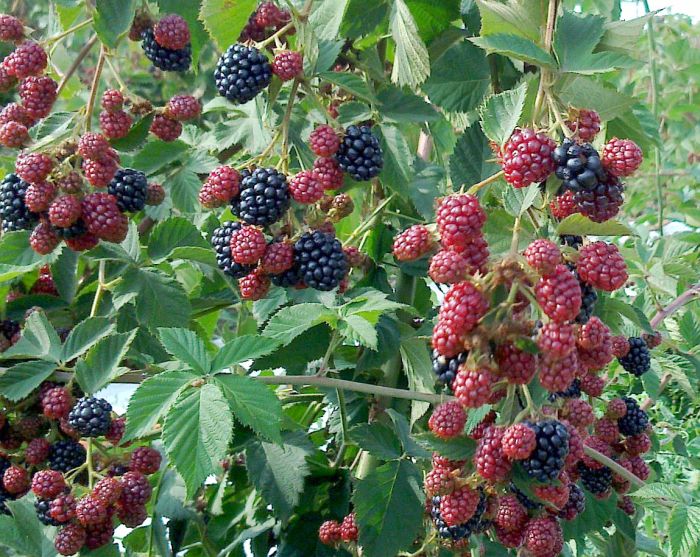
For growing in the Urals and Siberia
In the Urals and Siberia, they bear fruit well: Polar, Eldorado, Gazda.
For the Leningrad region
In the Leningrad Region, gardeners get good harvests from: Brzezina, Doyle, Aparaho, Polar, Eldorado, Triple Crown, Darrow.
For the South
In the Kuban, you can grow: Ouachita (Auchita), Columbia Star, Jumbo.
